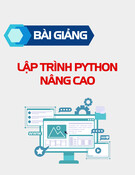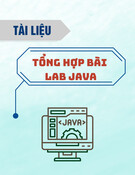
N.L.P.
NATURAL LANGUAGE PROCESSING
Teacher: Lê Ngọc Tấn
Email: letan.dhcn@gmail.com
Blog: http://lengoctan.wordpress.com
Trường Đại học Công nghiệp Tp. HCM
Khoa Công nghệ thông tin
(Faculty of Information Technology)

Chapter 3
Basic principles for NLP
NLP. p.2

POS –part of speech tagging (1)
Perhaps starting with Aristotle in the West
(384-322 BCE), there was the idea of having
parts of speech
It comes from Dionysius Thrax of Alexandria
(c. 100 BCE), the idea that is still with us that
there are 8 traditional parts of speech:
–Thrax: noun, verb, article, adverb, preposition,
conjunction, participle, pronoun
–School grammar: noun, verb, adjective, adverb,
preposition, conjunction, interjection, pronoun NLP. p.3

POS –part of speech examples for English
Nnoun chair, bandwidth, pacing
V verb study, debate, munch
ADJ adj purple, tall, ridiculous
ADV adverb unfortunately, slowly
P preposition of, by, to
PRO pronoun I, me, mine
DET determiner the, a, that, those
CONJ conjunction and, or
NLP. p.4

Open vs. Closed Classes
Open vs. Closed classes
–Closed:
•determiners: a, an, the
•pronouns: she, he, I
•prepositions: on, under, over, near, by, …
• Why “closed”?
–Open:
•Nouns, Verbs, Adjectives, Adverbs.
NLP. p.5

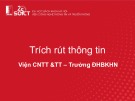
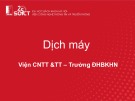
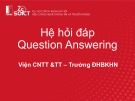
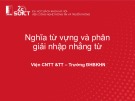


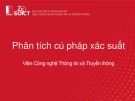
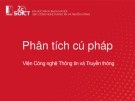
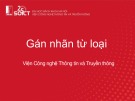
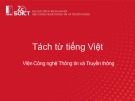

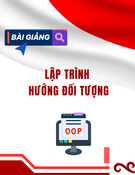






![Hệ thống quản lý cửa hàng bán thức ăn nhanh: Bài tập lớn [chuẩn nhất]](https://cdn.tailieu.vn/images/document/thumbnail/2025/20251112/nguyenhuan6724@gmail.com/135x160/54361762936114.jpg)
![Bộ câu hỏi trắc nghiệm Nhập môn Công nghệ phần mềm [mới nhất]](https://cdn.tailieu.vn/images/document/thumbnail/2025/20251111/nguyenhoangkhang07207@gmail.com/135x160/20831762916734.jpg)



